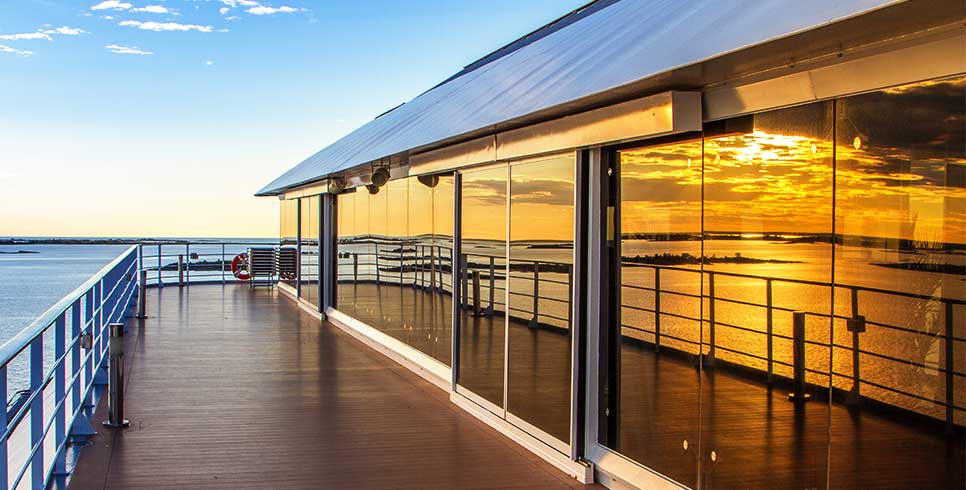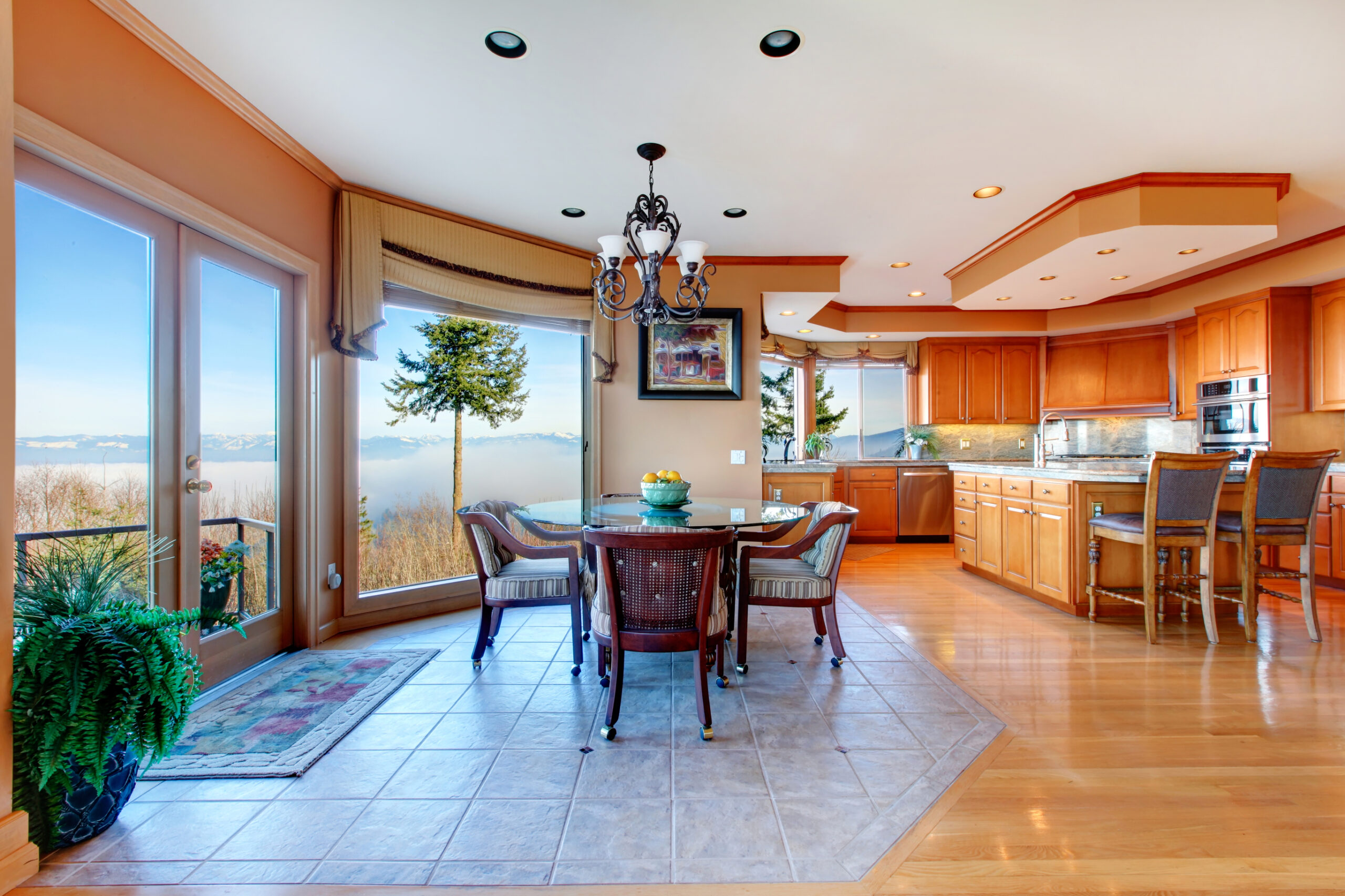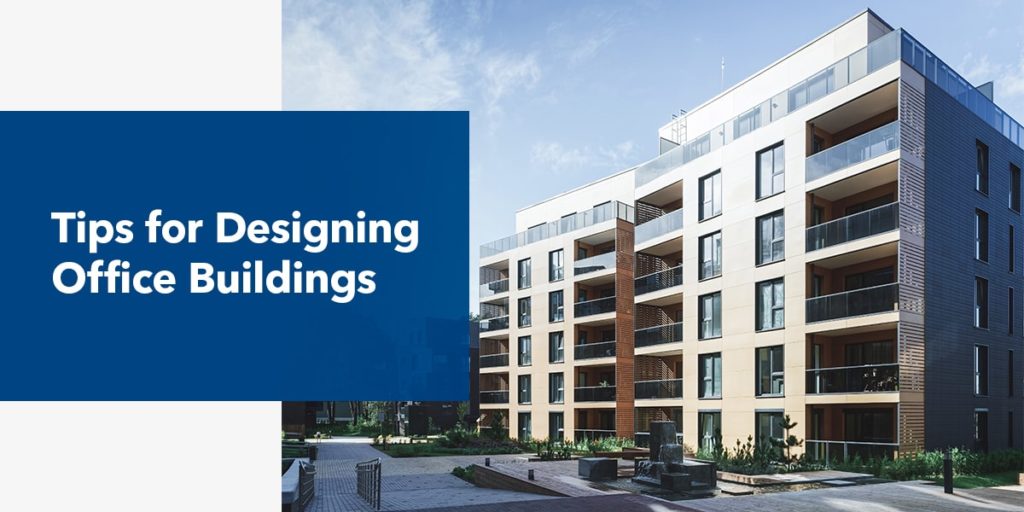
Office building design technology is changing rapidly, allowing architects to design safer, more secure and functional buildings that address the problems of modern office design. Many of today’s innovative architectural solutions blend both form and function, creating more efficient spaces that are also stylish and enjoyable.
In this guide to designing an office building, we cover some of the top challenges that architects face in office building design. We also provide building tips for office buildings, including how adding window film and tint products can enhance the aesthetics, functionality and security of an office building.
Top Challenges for Office Building Designs
When it comes to office building exterior design, architects and designers face numerous challenges. Office building designs must strike a balance between aesthetic appeal, functionality and cost-effectiveness, among other technical requirements.
Here are some of the top challenges of designing an office building:
- High energy costs: Energy is the single highest expense for commercial office buildings, amounting to one-third of the total average operating budget. Finding innovative, sustainable office building design ideas that reduce energy consumption is critical to building owners and operators. Energy-saving design ideas can include improving the building envelope, minimizing solar heat gain and maximizing HVAC mechanical design.
- Insufficient or extreme natural light: Ensuring sufficient natural light is an essential design requirement for office buildings as natural light is fundamental to worker health, well-being and productivity. However, it can be challenging for architects to allow sufficient light to enter the office space without it causing glare or extreme temperature and lighting variations. Therefore, designers need to find a way to reduce harmful glare without sacrificing the benefits of natural light.
- Fading interior materials: Designers know that it’s essential to select high-quality materials for both the exterior and the interior of buildings. In modern office buildings, interior materials can start to fade over time if they’re poor quality and are repeatedly exposed to harsh, direct lighting. The challenge for architects is to design an office building so it will conserve the aesthetic beauty of the interior long-term.
- Security: Office buildings must be safe for the occupants, and architects strive to maximize safety without compromising the building’s appearance. Finding security features that don’t disrupt the design flow is one of the top challenges that architects routinely face. Architects need to work with suppliers that produce innovative building materials that expertly blend safety and aesthetics.
- Balancing privacy and openness: For years, office buildings consisted of sterile rows of private cubicles that impeded social interaction among workers. Then designers moved toward an open floor plan that cultivated social well-being and creativity. Today’s organizations see separated areas as necessary for certain types of work. Designers must now find ways to balance openness with privacy, whether that’s with interior or exterior design. Finding the sweet spot between openness and privacy is an increasingly difficult challenge for architects working with design constraints like urbanization and smaller square footage.
By implementing the appropriate office building design ideas, architects can help their clients overcome these challenges and create beautiful, functional and secure spaces.
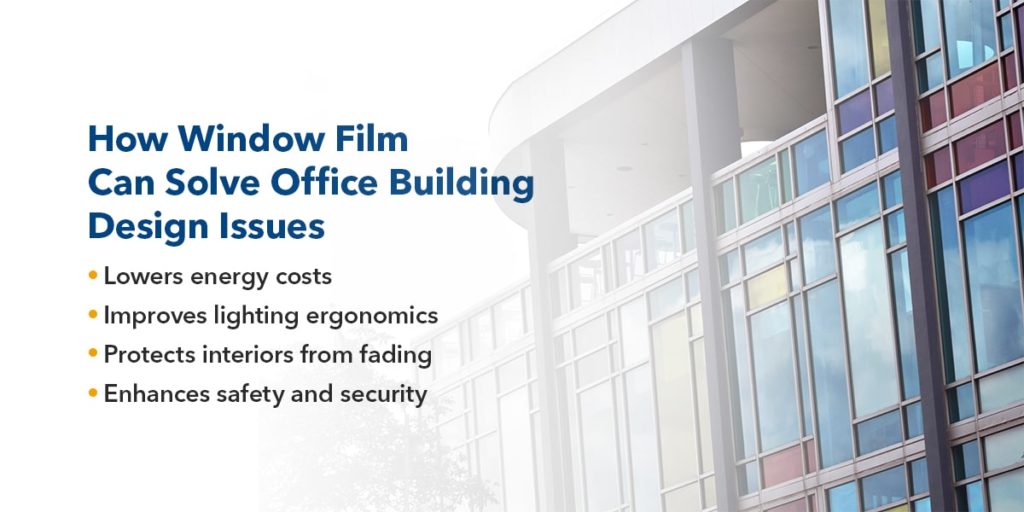
How Window Film Can Solve Office Building Design Issues
Architects looking for tips for designing office buildings should consider the benefits of adding window film and tinting into their designs. Madico®, Inc. window films and tinted coatings are aesthetically appealing, functional and cost-effective solutions to numerous office building design challenges that modern architects face. Windows play many roles in an official building’s architecture, providing natural light, security and privacy. Adding a professional window tint or film can enhance all these characteristics of office building window design.
Here are the top benefits of window film and tinting for office building design:
- Lowers energy costs: Windows are a crucial part of the building envelope that affect energy consumption. Incorporating window film and tint into commercial office building design can dramatically conserve energy consumption by minimizing solar heat gain. By reflecting up to 86% of the sun’s heat, Madico window film and tint products can help cut office air conditioning costs in the summer and retain heat in the winter.
- Improves lighting ergonomics: Office building design should promote worker ergonomics by eliminating sources of workplace discomfort. Variations in light and dark, including extreme glare across computer screens, create poor workplace ergonomics that affect productivity. Window tinting creates an even cast of natural light, preventing harsh computer screen glare.
- Protects interiors from fading: Extend the longevity of interior materials and finishes with window tinting and film coatings. Madico commercial window films block harmful UV rays, helping to slow the fading of furnishings, merchandise, artwork and other materials. Window tinting and coatings help preserve interior finishes so building owners can maximize their investment and avoid costly replacements.
- Enhances safety and security: Achieve added safety and security without sacrificing aesthetic design by installing window tinting and film coatings. Madico films for office building design are durable and help retain broken glass in the event of vandalism, burglary, natural disasters or other emergencies. By helping to hold shattered glass together, Madico commercial security window films protect occupants from injury and reduce the risk of property damage.
Maximize your office building exterior design with Madico commercial window tinting products.
Additional Benefits of Window Films and Tinting
An office building’s windows are an often overlooked source of numerous design benefits, and leveraging these advantages is one of the top tips for designing office buildings. Some additional benefits of tinting window films for commercial office buildings include:
- Adding decorative touches: Create a uniform, sleek exterior with decorative window films. Madico window films are energy-efficient, secure and designed to blend in as part of the building’s exterior style. Architects can choose from a range of textures and patterns, as well as branded graphics.
- Increasing privacy: Window films and tints are a simple and stylish way to increase a building’s privacy. Add window films to exterior and interior windows to create a visual barrier while maintaining the design aesthetic and allowing natural light.
- Promoting health and well-being: As more organizations seek to optimize productivity by improving employee well-being, architects are looking for solutions that help promote worker health. Madico architectural films act as a highly efficient UV barrier, protecting workers from 99% of the sun’s harmful UV rays. Window tints and coatings help protect employees from the sun, reducing their risk of skin cancer and maintaining workday comfort.
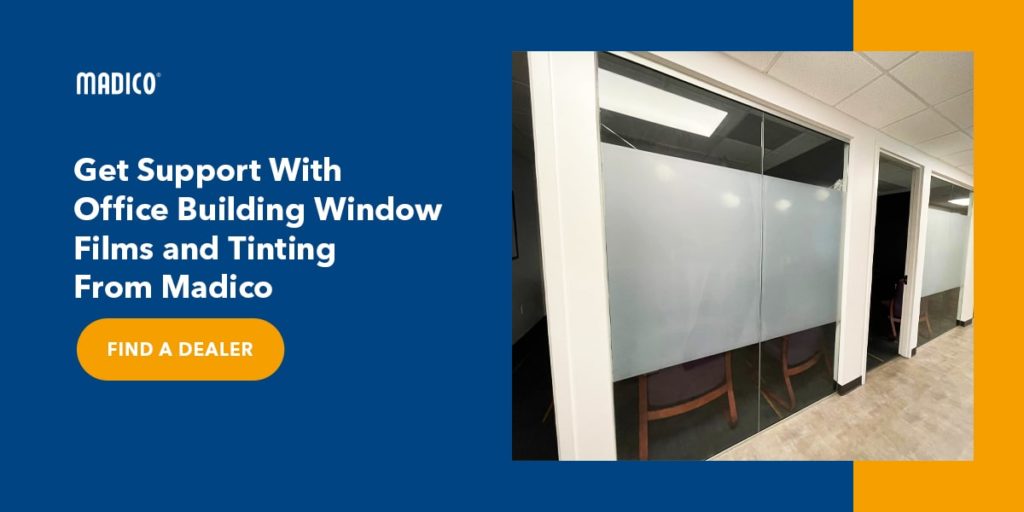
Get Support With Office Building Window Films and Tinting From Madico
Discover the benefits of window films for designing an office building with support from Madico. From decor and privacy to safety and security to energy savings and enhanced well-being, window films and tints provide a versatile design solution for modern office design challenges.
Learn more about Madico window film and tint products by exploring our resources for architects, or find a Madico dealer near you. Architects and engineers can contact us for more information on our range of products, features and specifications to meet your project needs.


